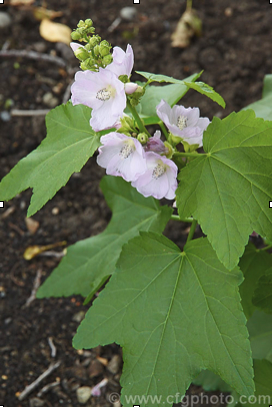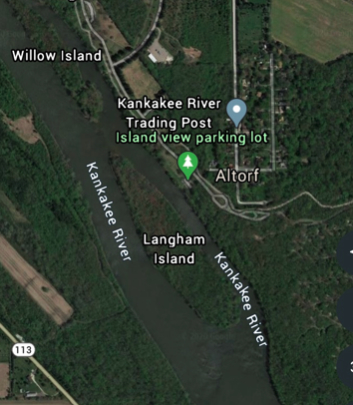Pop quiz: What is a Kankakee mallow?
If you got the answer right you are amazing and I tip my hat to you. (Or I will next time I put on a hat.)
If you only know that Kankakee is a city in the northeastern part of Illinois, you’re probably still ahead of the pack.
Not surprisingly, perhaps, someone will occasionally take a wild guess and ask if the Kankakee mallow is a kind of marshmallow. That’s actually pretty good thinking, but the answer is no.

Marshmallows are not close to extinction
The good news is that marshmallows, a confection made mostly from sugar, are plentiful. You can stop by any store and pick some up on your way to a cookout or camping trip where you might roast the things or even make smores.
Unlike marshmallows, there are close to a million species of plants, animals and insects that are on the brink of extinction, or at least considered endangered.
“Wow,” you might say. And then you might say that it probably doesn’t affect you, but when marshmallows are in trouble we should definitely let you know.
Why it matters
The natural world, the world that includes plants and animals and insects, is not separate from our modern and industrialized world. We often don’t think of it, but we are part of nature.
We as humans are called to care for the world on behalf of the millions of species that cannot help themselves. Moreover, we are called to care for nature because it is so deeply part of being human.
In 1872 a botanist named E.J. Hill became the first to take note of the Kankakee Mallow on Langham Island and immediately found that it resembled plants that one would be likely to find in the Rocky Mountains. The plant, Iliamna Remota, is only found on Langham Island (formerly Altorf Island) near the tiny, unincorporated town of Altorf, Illinois.
To this day, it is unclear how the plant became endemic to one tiny island in the middle of the Kankakee River. On the contrary, it became evidently clear that its survival would be completely dependent on the conservation efforts of the community.
Island living is the life for me (or is it?)
How would you do, living on an island in the Kankakee River?
In its natural state, the Kankakee Mallow needs extremely specific natural phenomena such as wildfires to reproduce.
Prior to the modern age, the wildfires that this plant so depended on were commonplace. In our modern world that is dependent on a massive agricultural industry that keeps us all alive and our stomachs full, wildfires on the great plains have all but disappeared. Prescribed burns are often used to regenerate certain areas today.
People want to help out
Since the Kankakee Mallow is without part of its reproductive cycle, it is up to a few caring groups of people to continually visit the island in order manufacture the perfect conditions for the plant to thrive. Through various programs such as the Kankakee Mallow Project, members of the community have come together to not only care for the plant itself, but also the extremely small island that it calls home.
The small, 20-acre island that Iliamna Remota calls home has fallen victim to the same decrepitness that most of our natural world has fallen into. Over time various invasive species, some good and some bad, have made their way onto the island and created a vastly different ecosystem than what Iliamna Remota is used to.
Think of it this way; if you were used to playing basketball against people under six-feet tall and suddenly had to go up against Lebron James in a slam dunk contest, you would be a little out of your element. This is sort of the plight of Iliamna remota.
Big help from members of the community
To combat this, members of the community show up every few months and deliberately remove any invasive plant they see and even go so far as to initiate prescribed burns throughout the island. Many invasive plants, like Bush Honeysuckle, or Amur Honeysuckle, completely block out the sunlight and create a canopy under which no native plants can survive.

By removing these invasive plants first, and then doing prescribed burns, the island is able to remain in its semi-natural state at all times. This is extremely important for giving the Kankakee Mallow a chance to gain a foothold again.
You might be asking yourself why this one little plant is so important. Indeed, such a small plant, living on a such a small island cannot possibly have that much importance in the grander scheme of life, right?
Find your inspiration and go for it
Well, perhaps the story of the Kankakee Mallow is more a story of keeping a glimpse of the past alive, and providing hope for the future at the same time. While there are hundreds of thousands of endangered species on this planet, a few people decided to combine their energy to save one. One little plant, surely unknown to anyone that has never been to its tiny island home, yet it means so much to the surrounding community.
Perhaps the story of the Kankakee Mallow can best be summed up by this: Find something that fires you up, inspires you, and gets you excited for the day. For some, it could be their morning coffee reading the newspaper. For others, it might be something more unique. Whatever that ‘little’ thing in your life may be, go after it and keep it alive.
Doing good is a lot like planting seeds. With the right conditions and a bit of care, they will grow and eventually plant new seeds themselves. You may not have a Kankakee Mallow, but you can certainly plant the seeds of good in your community, wherever you call home.
